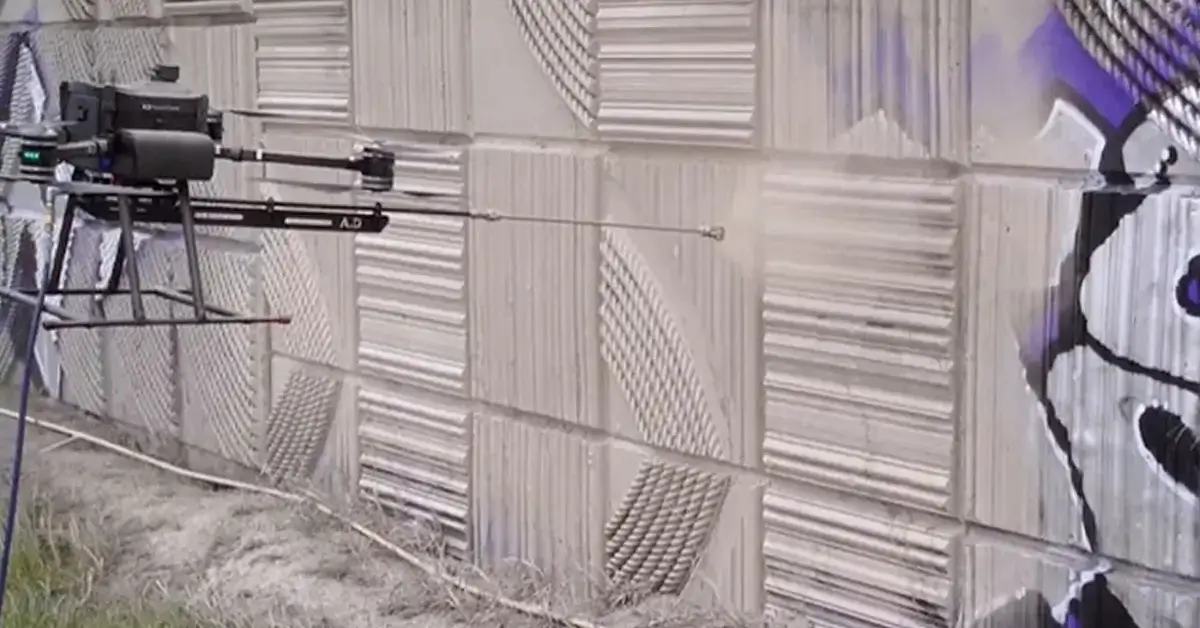New Surveillance System Tracks Inmates Down to Their Heart Rate
A new surveillance system that can track inmates every move, down to their heart rates, is now being implemented at the Fulton County Jail in Atlanta, Georgia.
Inhumane Living Conditions
The situation within the Fulton County Jail system in Atlanta, Georgia is extremely concerning. Inmates are forced to sleep on the floor using plastic trays as makeshift beds. Disturbing footage from a local news report reveals cell doors hanging off their hinges, and water leakage creating pools on the floor in certain areas. Tragically, last September, a person was discovered deceased, having been covered in bed bugs.
The conditions described highlight significant problems within the jail system, including issues with infrastructure, maintenance, and sanitation. The lack of suitable sleeping arrangements, damaged cell doors, and water leakage not only compromise the dignity of the inmates but also raise concerns about their safety and well-being. The presence of bed bugs is particularly distressing and underscores the need for proper hygiene and pest control measures.
Addressing these challenges requires immediate attention from relevant authorities. It is crucial to prioritize the improvement of living conditions, ensure regular maintenance and repairs, and implement comprehensive measures to prevent the spread of pests and maintain a hygienic environment. The tragic incident of the individual’s death further emphasizes the importance of providing adequate care and supervision to protect the lives of those in custody. Such actions are essential to uphold the rights and well-being of individuals in custody and to foster a more just and humane criminal justice system.
Along Comes Talitrix
The Fulton County Sheriff’s Office, responsible for managing multiple jails in the Atlanta area, has received additional funding to address the problems within the facilities. As part of their efforts, they are implementing a new surveillance system designed to track inmates with a high level of precision. This system involves embedding hundreds of sensors into the jail walls, which communicate with wristbands worn by inmates using radio frequencies.
Developed by Talitrix, a Georgia-based company, the system has various capabilities. It can track an inmate’s heartbeat, determine their location every 30 seconds, and create 3D images that show interactions between individuals. Documents obtained through a public record request, including legal agreements, statements of work, and internal presentations, shed light on the functioning and features of this monitoring system.
The Fulton County Sheriff’s Office and Talitrix assert that the system can enhance the efficiency of understaffed jails and improve overall safety. Monitoring heart rates can also help staff identify potential health issues or suicide attempts among inmates. However, critics argue that such monitoring technologies subject inmates to increased surveillance without adequately addressing deeper systemic issues within the criminal justice system.
The Talitrix system is just one example of electronic monitoring devices being deployed in jails across the United States, and it appears to be one of the most advanced. Some systems focus on suicide risk, while others utilize RFID chips that require manual scanning. As staffing shortages pose challenges for jails and prisons, automation has increasingly been adopted to monitor and manage individuals within the system. However, researchers have pointed out that inmates are among the most extensively surveilled, data-driven, and documented populations, often without the ability to opt out of such monitoring.
Inside the Walls
Talitrix’s tracking system consists of two components: the physical infrastructure, which includes sensors embedded in the jail and Fitbit-like wearables worn by inmates, and the software that enables corrections officers to monitor the collected data and receive alerts.

According to company documents, Talitrix began collaborating with the Fulton County Sheriff’s Office in September 2021. They conducted a trial of their system in one of the region’s jails during the technology’s development phase and have been progressively expanding its implementation since February of the following year. The documents reveal plans to install 750 sensors (priced at $350 each) and provide 1,000 wristbands (priced at $130 each). The sensors are being placed throughout the jail but not within the cells. The software usage costs hundreds of thousands of dollars annually.
Justin Hawkins, CEO of Talitrix, explains that approximately 450 inmates, including those in the psychiatric and acute medical wards, are expected to wear the wristbands at the main Rice Street jail in the region. Lt Col Jarrett Gorlin from the Sheriff’s Office confirms the trial of the wristbands and the intention to further implement the technology, but a specific timeline for full deployment has not yet been determined.
FitBit-Style Tracking Wristbands Track Inmates’ Every Move
The biometric wristbands designed for use in jails and prisons resemble sports watches but are tailored for the correctional environment. Hawkins mentions that the wristbands, devoid of screens or GPS capabilities, can monitor heart rate (with future versions including oxygen tracking) and communicate with the sensors installed in the jail walls. Talitrix has integrated various radio frequencies with their algorithm to create the system.
Each wristband has a battery life of 30 days and a locking mechanism that inmates cannot tamper with. If a band is cut, it will trigger an alert to prison staff within 15 seconds. The system tracks the whereabouts of inmates, recording their duration spent in cells or specific areas of the jail, such as visitation rooms. A statement of work between Talitrix and the Fulton County Sheriff’s Office from January 2023 indicates that the software should facilitate maintaining spacing between designated inmates and creating and archiving inmate movement. The documents also clarify that the devices are not certified as medical products.
Screenshots of Talitrix’s software, known as Inside the Walls, demonstrate that correction officers can view the number of inmates in different areas of the jail, inmate names, jail-cell numbers, and heart rate details, including the last recorded rate and a graph displaying changes over time. The software provides information on the number of hours an inmate has spent in their cell versus outside of it. An alerts tab notifies officers of instances where an inmate’s heart rate has dropped or spiked.
One notable feature within the system is a 3D reconstruction of the jail facility, referred to as “facility replay.” This visual representation displays the positions of inmates, represented by generic human characters, at specific times. Screenshots from a PowerPoint presentation depict inmates standing near each other in the visualization.




